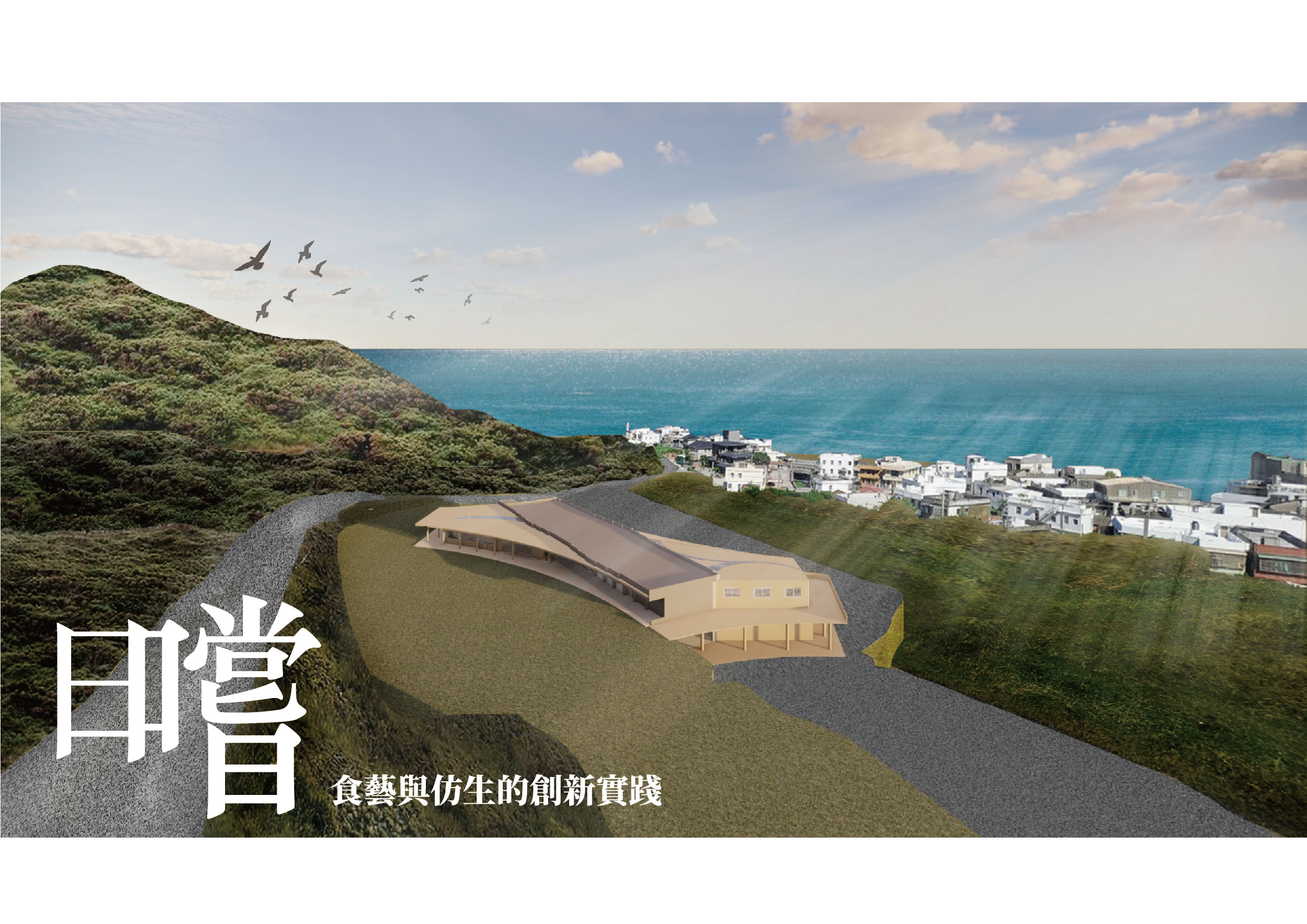
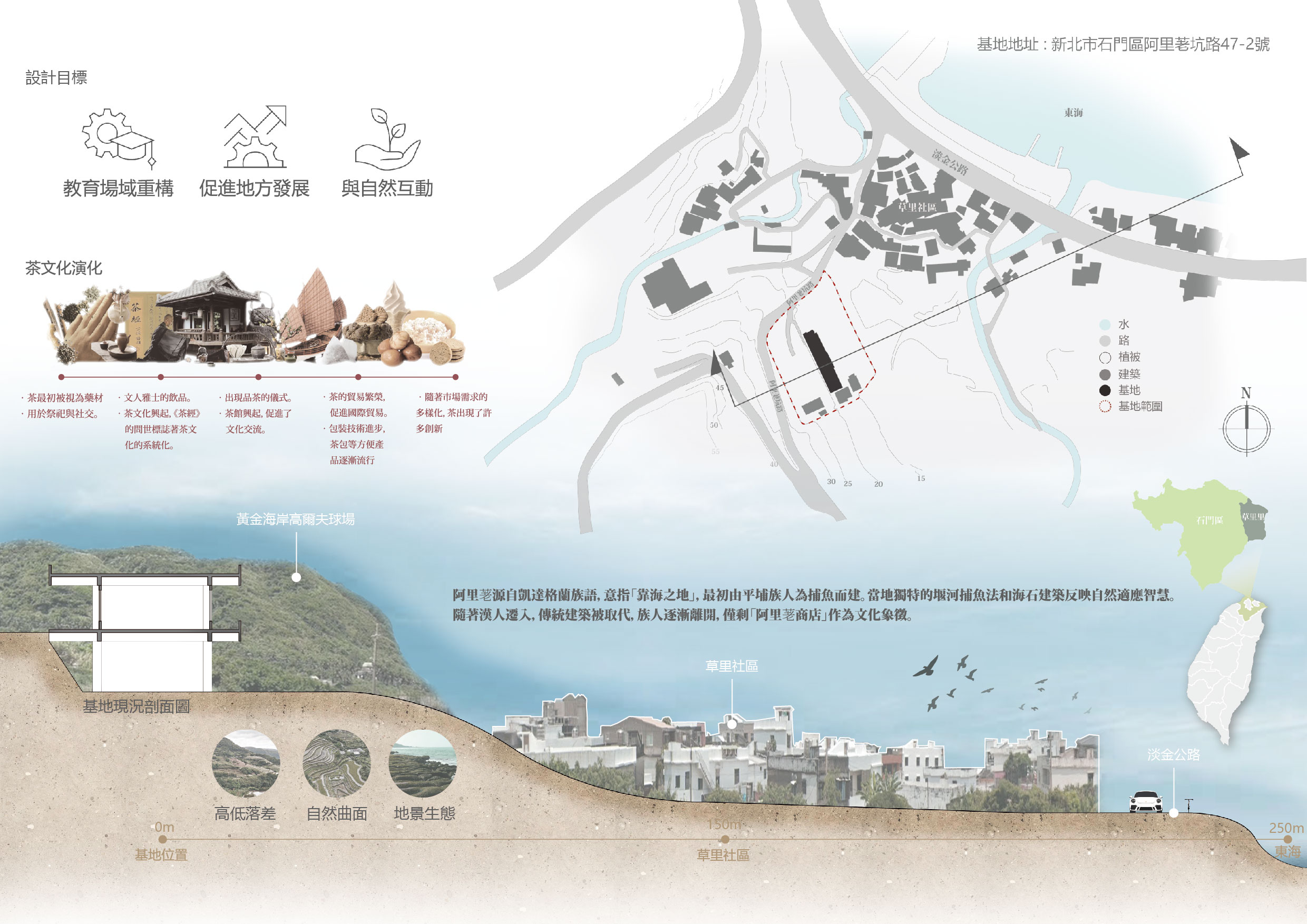
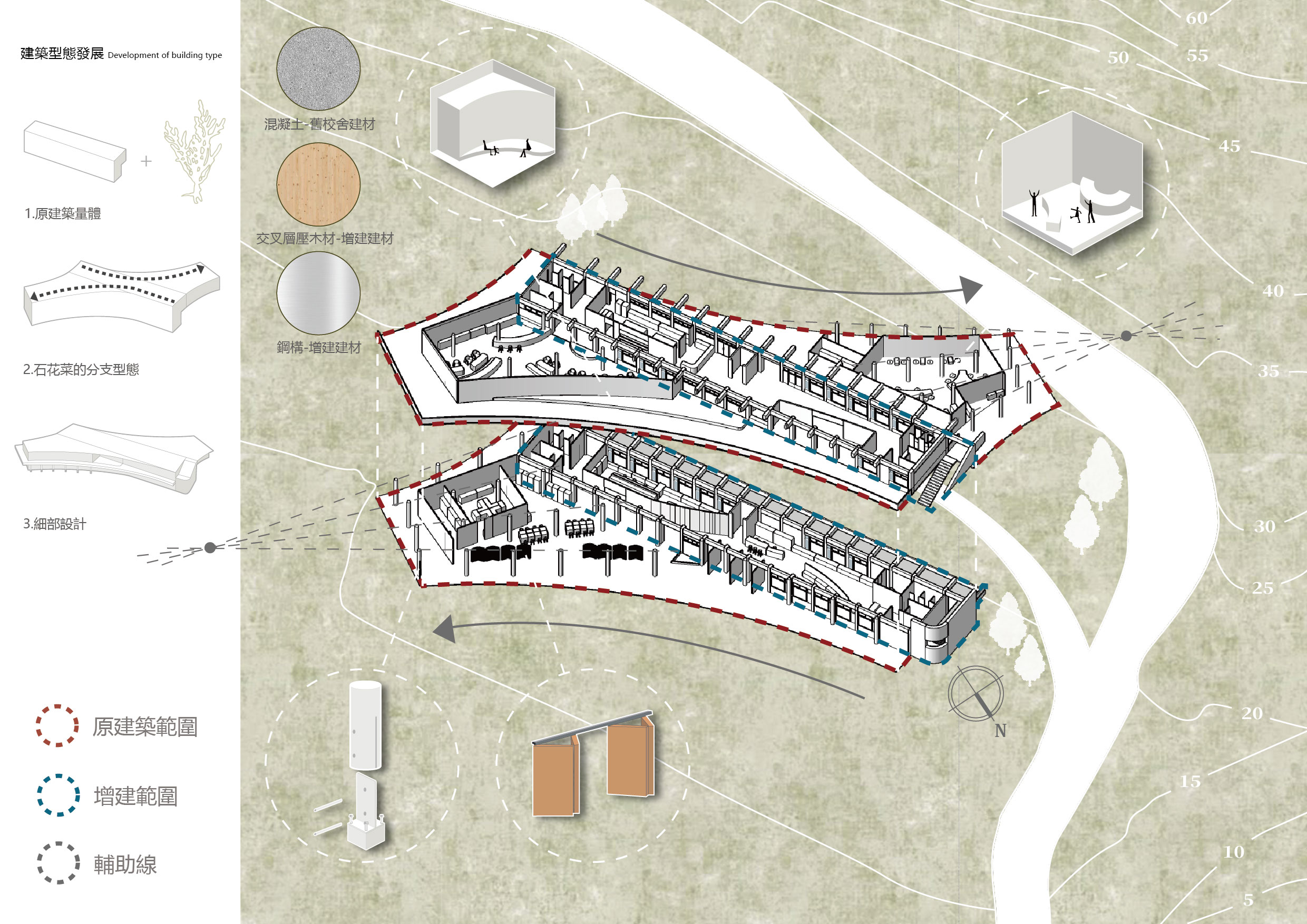
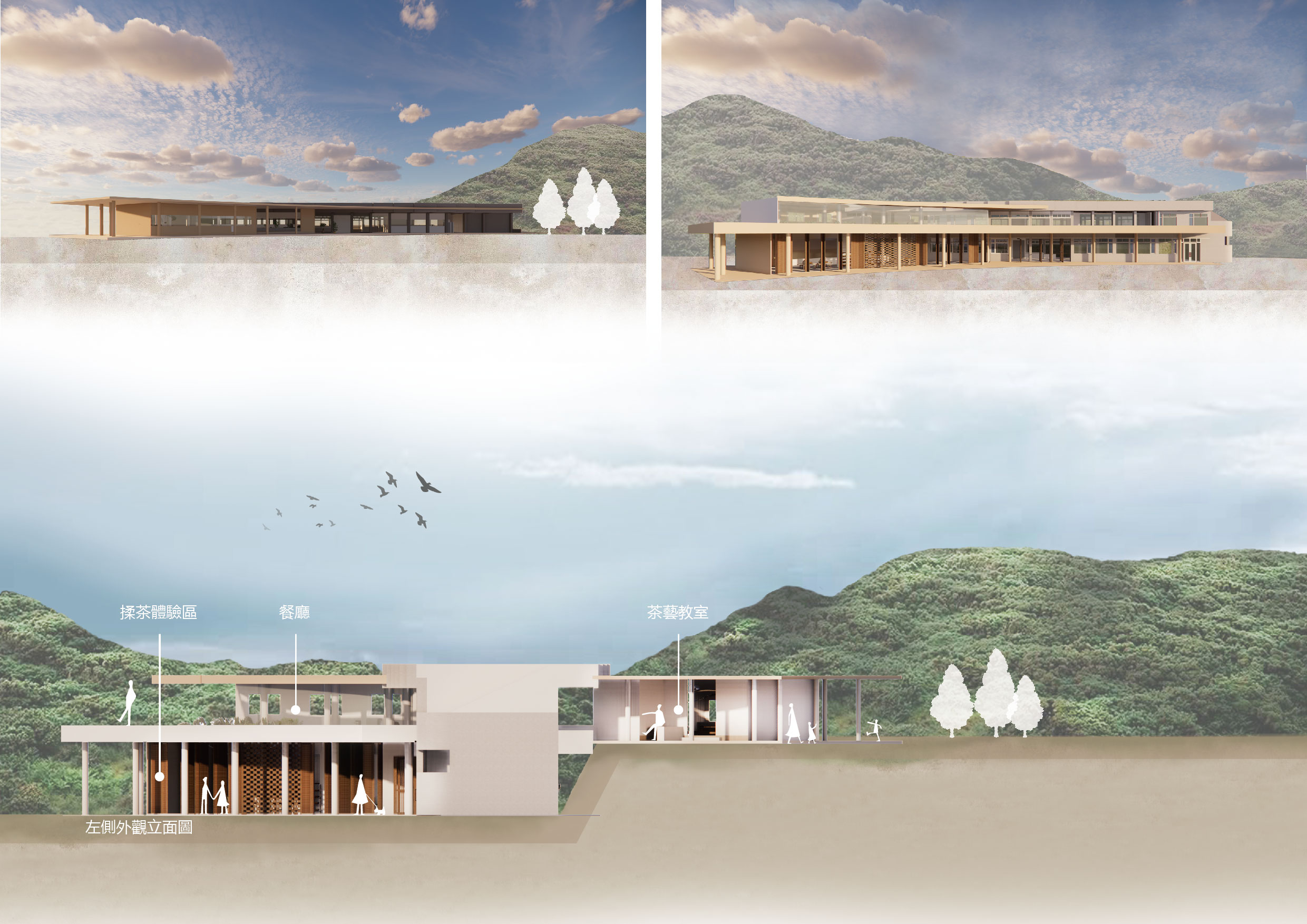
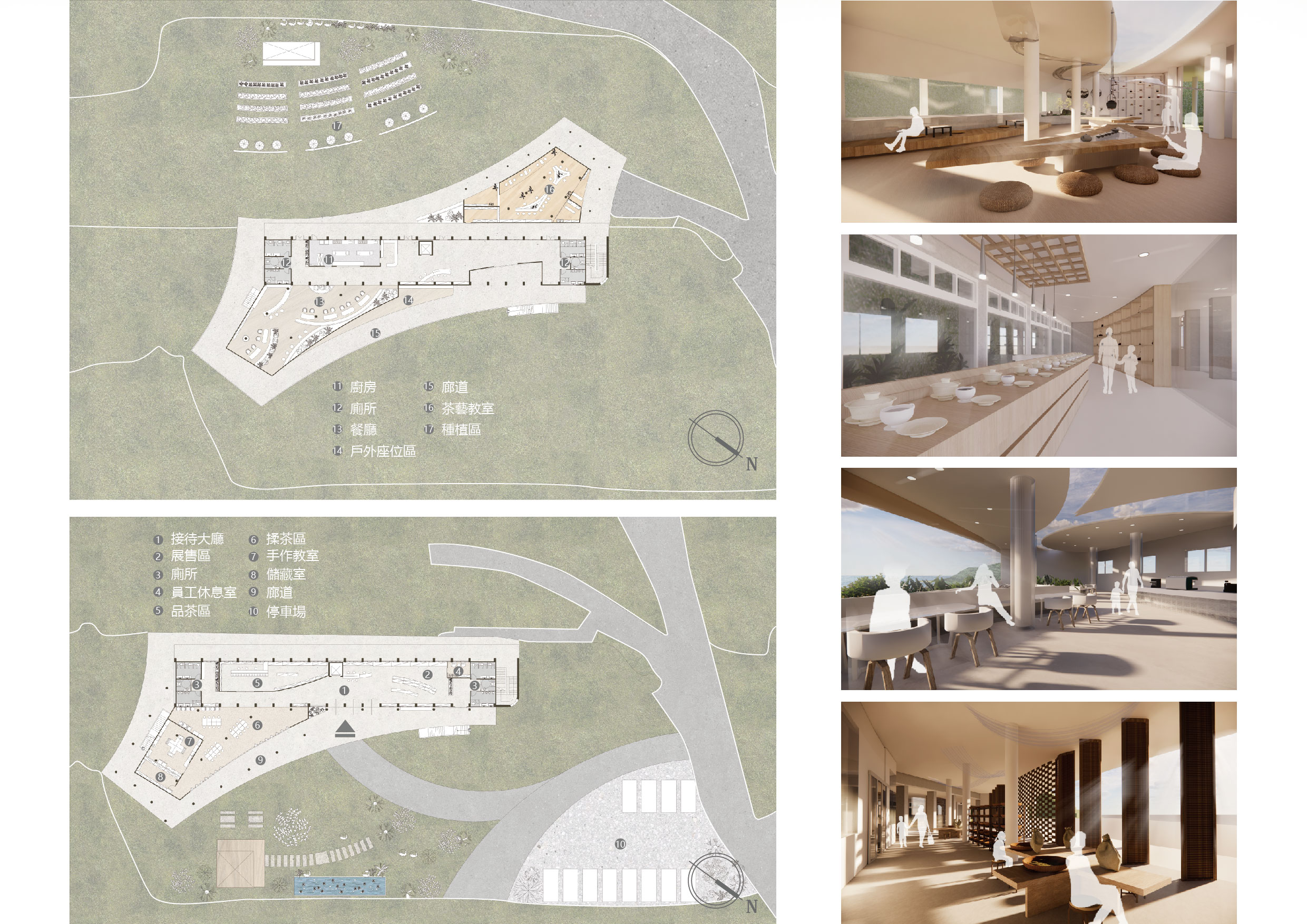
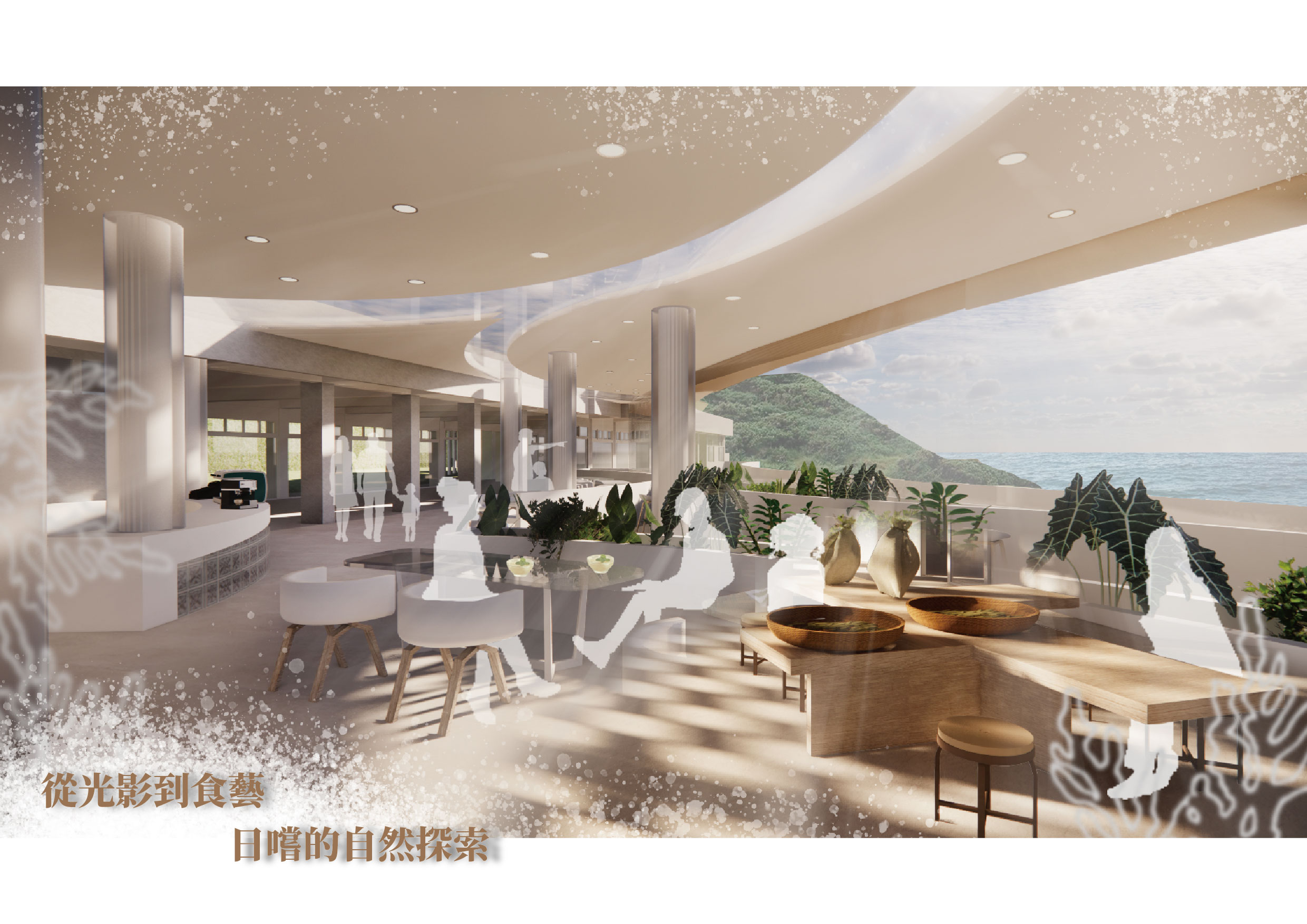
位於石門綠山藍海交界,透過老梅公學校阿里荖分校的線性形態,打造一個融合自然與文化的食藝學習場域。空間設計強調光影變化與旅者的互動,並融入仿生美學,以「鳳羽寒天」(石花菜的台語說法)象徵地方特色,延續場地的教育本質。
核心理念圍繞以製茶、品茶及茶點製作為主軸,結合在地自然元素與光影結構,創造沉浸式學習體驗。空間組構參考老梅校舍的線性脈絡,透過層次感與開放式動線,引導旅人探索食藝與技藝。
此場域不僅是品茶空間,更是實驗性的食技藝學習處,讓人透過互動體驗學習製茶技藝,感受石花菜與茶文化交織出的獨特韻味。建築設計融合新舊,以歷史紋理承載地方記憶,並以光影、材料與結構展現學習過程的流動感,使空間成為探索、品味與創造的交會點。
Located at the junction of the green mountains and blue sea in Shimen, through the linear form of the Alixing branch of Laomei Public School, it creates a food art learning field that integrates nature and culture. The spatial design emphasizes the interaction between light and shadow changes and travelers, and incorporates biomimetic aesthetics, using "phoenix feather cold sky" (Taiwanese word for stone cauliflower) to symbolize local characteristics, continuing the educational essence of the site.
The core concept revolves around tea making, tea tasting and refreshment making, combined with local natural elements and light and shadow structures to create an immersive learning experience. The spatial structure refers to the linear context of the Lao Mei Campus, and guides travelers to explore food art and skills through a sense of hierarchy and open circulation.
This venue is not only a tea tasting space, but also an experimental food skills learning place, allowing people to learn tea-making skills through interactive experiences, and feel the unique charm of stone cauliflower and tea culture. The architectural design blends the old with the new, carries the memory of the place with historical textures, and expresses the flow of the learning process with light and shadow, materials and structures, making the space a meeting point for exploration, taste and creation.